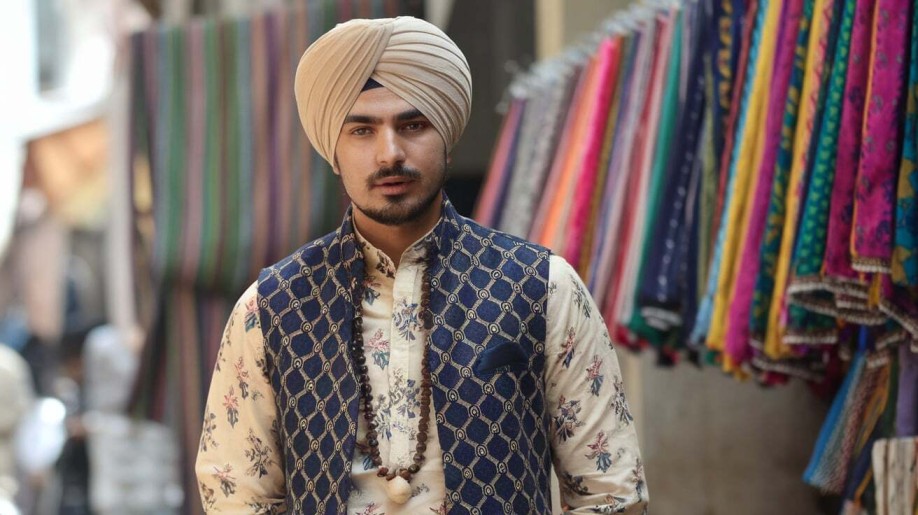Master the Mix: Pattern Pairing Tips Every Man Should Know
Mixing patterns has become a key trend in men’s fashion, adding a unique, eye-catching dimension to everyday style. While it can initially seem intimidating, mastering the art of combining different patterns is all about balance and confidence. Blending patterns allow men to express creativity and individuality through clothing, from bold stripes and classic checks to florals and geometric designs. Anyone can create a stylish and unconventional look with a few basic principles—like understanding scale, color harmony, and layering techniques. This guide provides key strategies and techniques to help you master the art of pattern mixing and enhance your wardrobe.
Understanding Patterns
- Geometric Patterns: Geometric patterns, characterized by shapes like squares, triangles, and diamonds, provide a modern, structured look. These patterns are versatile, often appearing on shirts, ties, and socks, and can be easily paired with simpler prints for balance.
- Floral Patterns: Florals bring a fresh, dynamic element to an outfit. Popular in casual shirts and accessories, floral patterns can range from subtle and small-scale to bold and oversized. They add a touch of personality and are often best paired with solid colors or fine, neutral prints.
- Stripes: A classic pattern that comes in various styles, from pinstripes to bold, wide stripes. Stripes are highly adaptable—horizontal stripes can broaden the frame, while vertical stripes add height. They mix well with other patterns, especially checks, and serve as a great starting point for pattern-mixing beginners.
- Plaid and Checks: With overlapping lines and grids, plaids and checks offer a more complex visual structure. These patterns work well with other geometric designs or subtle prints, adding a refined, often timeless element to an outfit.
Pattern Principles
- Scale and Proportion: Mixing patterns effectively requires varying the size of each print. For example, pairing a small polka dot shirt with a large plaid jacket creates a balanced look that avoids overwhelming the eye. Choosing patterns of different scales helps add depth without appearing chaotic.
- Color Coordination: When mixing patterns, stick to a cohesive color palette. Colors that complement or harmonize, such as analogous or monochromatic shades, create a more polished, put-together look. Limiting your palette also makes bold patterns more wearable.
- The 60-30-10 Rule: This rule helps achieve balance in patterned outfits. It suggests using 60% of a dominant pattern, 30% of a secondary pattern, and 10% of an accent. For example, a patterned blazer is the main focus, a smaller pattern on a shirt, and a subtle patterned tie as an accent.
- Focus on Texture and Fabric: Mixing textures, such as pairing a wool plaid blazer with a silk polka dot tie, adds variety and sophistication to your outfit. Textural differences can also soften or enhance the impact of your patterns.
- Balance with Neutrals: If mixing multiple patterns, neutral pieces (e.g., solid-colored trousers) can balance the look, keeping it visually appealing without feeling too busy.
Style Hacks
- Start with Subtle Combinations: Mix small patterns with solids or neutrals. For instance, try a striped shirt with a solid-colored jacket before moving to bolder combinations. This builds confidence in pattern mixing without overwhelming your style.
- Mix Stripes and Checks: These classic patterns are versatile and often complement each other well. Pair a striped shirt with a checked blazer or tie, keeping colors in harmony for a refined look. Stick to different scales (e.g., thin stripes with large checks) for balance.
- Experiment with Accessories: Accessories like ties, pocket squares, and socks are excellent for subtly introducing patterns. A patterned tie or pocket square can elevate a solid or subtly patterned suit, adding visual appeal without overpowering the overall look.
- Layer Patterns with Texture: Mixing textures adds sophistication to patterned outfits. Pairing a tweed blazer with a soft, patterned shirt or a knit sweater with subtle prints creates depth and dimension without feeling too busy.
- Know When to Scale Back: Balance is essential; if one piece is particularly bold, keep the rest understated. For instance, if wearing a bright floral shirt, choose neutral trousers and accessories to maintain focus without clashing.
Examples of Successful Pattern Mixing
- Floral Shirt with Geometric Pants: A vibrant floral shirt pairs well with tailored geometric-patterned trousers. The floral print adds a lively touch, while the geometric pants provide structure, creating an eye-catching yet harmonious look.
- Striped Blazer with Polka Dot Tie: A classic navy striped blazer combined with a contrasting polka dot tie demonstrates refined sophistication. The stripes offer a traditional feel, while the dots add a playful element, perfect for business casual settings.
- Plaid Shirt with Houndstooth Jacket: A checkered plaid shirt works beautifully under a houndstooth-patterned jacket. The key is to choose different scales for each pattern, allowing them to complement rather than clash, while a solid-colored pant keeps the ensemble grounded.
- Mixing Small Patterns: Pairing a pinstripe suit with a finely patterned shirt can create a sophisticated look, ideal for formal events while remaining stylishly modern.
Final Thoughts
Mastering the art of pattern mixing can enhance your style and showcase your individuality in fashion. By grasping the principles of scale, color coordination, and balance, you can confidently craft unique combinations that truly stand out. Start with subtle patterns and gradually experiment with bolder choices, always considering the importance of fit and fabric. Remember, the key is having fun with your wardrobe while staying true to your style. With practice and creativity, you can transform conventional outfits into eye-catching ensembles that showcase your flair for pattern mixing. Embrace the challenge and enjoy the journey!


